Click below to watch the video:
When truth is forced underground, it takes several generations before it emerges. Discover the secret sects and suppressed teachings from the second,third and fourth centuries of Islam. Eventually the truth will surface, even if it is squashed again. The main topic of this video is the Letters of the Brethren of Purity (Qarmatian teachings).
Transcript
Video #28 This is a general transcript of a Dan Gibson video in the series: Archeology and Islam.
Hello, my name is Dan Gibson and this is the second video on the subject of Evidence Suppressed.
In the first video, we explored the Umayyad inquisition led by Ḥajjāj ibn Yusuf, who was the Governor of Iraq, the Hejaz, Yamama, and Yemen, basically the eastern half of the Islamic empire between the time of 60 AH and 95 AH (680 - 714 CE). We noted that he persecuted the old school Muslims, especially the Companions of the Prophets. He silenced their objections and some he had killed outright. By the end of his reign of terror, all objections to the religious reforms that took place during the time of the Umayyads had been accepted, or those that argued against them were subjected or eliminated. While Islam appeared to be one cohesive religion on the outside, those with objections went underground.
It is during the second and third century of Islamic history that we come across teachers, known as the “Hidden Imams.” These were teachers who claim special knowledge, and special teachings that were ‘other than’ what the rest of Islam accepted. All of these Imams were Muslims; at least they all claimed Muhammad as their prophet, and the Qur’an as their scripture. For example, one of these was Imām Wafī Aḥmed (212 AH). He began writing down his teachings, which were added to by other Imams, often in secret.
During the next 100 years of Islam, there were two major developments that we want to think about. The first was the development of Bayt al Ḥikma or the House of Wisdom. It was a drawing place for those who wanted to explore the sciences, and so there is a burst of research and knowledge in many fields, especially mathematics, astronomy, and medicine. But within Bayt al Ḥikma were various influences. The ruling Abbāsids had a strong interest in controlling what was going on in the research that was taking place. But there were also these secret teachers and imams who were influential in speaking to others. During this second century, through these Hidden Imams there was a re-introduction of esoteric, cultic and magic investigations. There was also a tension that grew between them and the caliphs at that time. There were those who wanted to protect what Islam was and there were those who wanted to explore new things.
It is during this time that the roots of groups such as the Ismā’īlī, Ṣūfī, and Qarmaṭians were developed. Their roots are obscure, because they themselves were obscure groups, especially at the beginning. And they were not looked on with favor by the ruling caliphs.
At the beginning, these groups were more like secret sects with secret knowledge and rites. By 300 AH the Abbāsids were alarmed to learn how wide-spread these groups were. When capturing and torturing their members they discovered that they had books and training manuals. These were strangely illustrated with curious diagrams. What alarmed the Abbāsids is that the members of these secret societies were studying these textbooks in a progression, and then they learned one manuscript then they would move on and learn another manuscript, written by anonymous teachers. So they could not peg down the source of these groups.
Eventually the Abbāsids discovered fifty-one anonymously authored epistles known as the Risā’il of the Ikhwān al- Ṣafā (Letters of the Brethren of Purity). These were sometimes found as single letters, and sometimes they were bound in four volumes. They contained philosophy, theology, cosmogony, and much more.
There was mention of a fifth volume, which was deliberately not included with the four volumes. The fifth volume was only intended for those who had mastered the earlier materials, and it was said to bring together everything and make everything clear.
The students of these secret societies were classified into four groups.
- The “Craftsmen” – a craftsman had to be at least 15 years of age; they were known as the “pious and compassionate” (al-abrār wa ‘l-ruhamā). So that is what you got to add to your name. You were so and so, the pious and the compassionate.
- The “Political Leaders” – a political leader had to be at least 30 years of age; He would be known as the “good and excellent” (al-akhyār wa ‘l-fudalā).
- The “Kings” – a king had to be at least 40 years of age; and was known as the “excellent and noble” (al-fudalā’ al-kirām).
- The highest order were the “Prophets and Philosophers” – to become a Prophet or Philosopher a man had to be at least 50 years old; and was considered equal to Jesus, Socrates, or Muhammad. This rank was known as the “angelic rank” (al-martabat al-malakiyya).
These groups did not speak openly, not even to each other, but instead they used allegory such as animal stories to speak about themselves and their relations with opposing political and religious powers. In some cases, secret names were used, such as Pharaoh, and Hamon, to identify people in power.
Dating the source of these writings is not a simple task, but by 300 AH one group had grown in size and had become wide-spread, with centers of concentration in Kufa, and in the sawād, and area north-eastern in Saudi with black fertile soil. Some of them had spread to Yemen, starting pockets of students there. These were known as the followers of a man, Qarmat. Ḥamdān ’s followers were named the Qarāmiṭa (singular Qarmaṭī), “men of Qarmat.” It is where we get the name Qarmatians from.
Back in 300 AH they were especially concentrated in an area that was known then as al-Bahrāin. Today, most outsiders associate the name Bahrāin with a small island country in the Persian Gulf. But originally the name was used for a much wider area, especially the sawād of Saudi.
The earliest datable reference to the hidden teachers is mention of the mathematician, al-Khwārizmī who died in 236 AH / 850 CE. (Rasā’il, vol 4, pg 289) Some historians place the creation of these 51 epistles at a later date, some push it to a century later.
The opinion of the translator of the book I have been reading, The Qarmatians, from concept to state, by Mai Mohammed al-Khalifa, that is, Dr. Abdulla Lux, seems to favor the earlier dates. What is obvious to me is that by 301 AH when a leader of this group, Ibn Manṣūr al-Hallāj was imprisoned, the movement was in full vigor.
The 51 epistles contained wisdom from Muslim, Greek, Persian, Indian, Jewish, Christian, Gnostic, Hermetic, Ḥarraniān, Zoroastrian and Chaldean sources, all different wisdom brought together and organized so that it could be clearly taught. But the 51 epistles were not the only source material used. In 1980 other works were discovered, such as Abdān’s Shajarat al-Yaqīn. (Tree of Certainty) With its discover, more material was available to scholars studying this era, but volume 5 of Risā’il of the Ikhwān al- Ṣafā has never been found. Some historians think that it was only an index to the earlier material, while some think it was the final and ultimate culmination of the secret teaching, meant only for the highest levels. And thus, few of them were made.
These secret societies thought in terms of two levels of the Islamic religion. The first was a pre-requisite for the next. First people became Muslims, and followed the prophet Muhammad and his Sunna. The second level was a philosophical level that was known as faith, or īmān. This second level was not to be attempted unless one was a fastidious and scrupulous pious Muslim. The second level was seen as a spiritual level, even though their physical bodies were present in the physical space here on earth, their minds and their spirits were becoming aware of spiritual unseen things. So the Abbāsid rulers were seen as temporal rulers, living in what the epistles called jahannam or hell on earth. This term came from the Hebrew term Gehennom.
So the conflict between the Abbāsids and the followers of the 51 epistles was based on a mutual misunderstanding of the meaning of terms. The goals that they had were different. The Abbāsids were concerned with ruling a physical Islamic Empire. The followers of the 51 Epistles were interested in attaining spiritual consciousness and academic abilities… but the Abbāsids feared that they were becoming a political threat, so persecution began very early, despite the fact that this group did not seek political control. It is my opinion that this persecution forced them to later use military force to help them establish their own place of security. In this video we want to highlight the teaching, and the followers of Ḥamdān Qarmat who was initially an Ismā’īlī missionary but started his own movement known as the Qarmaṭians, but among themselves they were known as the Brethren of Purity. The earliest book written against their teachings comes from 260 AH / 874 CE, and already this teaching was well established.
Ḥamdān’s followers were guided by traveling teachers and agents. They offered secret wisdom to those who would follow. And they were particularly attractive to the masses. You see, higher education was available to the elite. While most Muslims learned to read and write in small local schools, higher education was usually out of their reach unless they could find a teacher and pay to attend. The secret societies offered a different route.
As long as they could read, they could start their way through the first epistle. Once that was mastered they would move on to the second and so forth. When they started studying, they were already given special honor. They were known as Craftsmen, the first level,and people added “the pious and compassionate” to their name. So for outsiders, that sounded like a nice honorific title, but to insiders, they understood immediately what level this person was at in this teaching. As these teachers traveled, they found willing students. To qualify, first, they had to be pious Muslim, who could read and write. Then they could start on their education, without leaving their jobs. They could continue to earn their living, but at the same time, they had access to education.
It was even a source of pride that they would be known by their low-class occupation. For example, Abdan, the chief missionary and right hand man of Ḥamdān Qarmat was known as The Tiller and Ox-herder! What made this especially charming is that simple shepherds, tillers, herdsmen, and local shop keepers could quote from Socrates, Galen and Plato, and other well known ancient writers. They had a grasp of mathematics, astronomy, geometry, history and much more.
Imagine a young teenager being introduced to this secret society… and learning that the man he bought spices from in the market was actually a scholar, able to converse and discuss a wide variety of academic topics. And he too, a teenage, if he aspired, could climb the ladder of knowledge and power. And some did. Even Queen ‘Awrwā of the Sulayḥid dynasty reached the highest rank possible.
But there was also a price to pay. The missionaries collected a one-fifth tax from their converts. These funds allowed the group to grow in power. While their identities remained a secret, their leaders, such as Ḥamdān were able to pursue their own policies. Eventually in 880 CE/266 AH Ḥamdān’s followers were so large that he could make overtures for an alliance with the leader of the Zanj, a secular rebellion, but the Zanj rebuffed the offer, even though he claimed they could field 100,000 fighting men of the Qarmaṭians.
In 890-891 CE / 277 AH, a fortified refuge (dār al-hijra) was established by Ḥamdān for his supporters near Kufa; where they had a community of there own, where it was safe.
The early Ismā’īlīs and Qarmaṭians were focused on self-discipline and asceticism with the goal of possessing secret knowledge and gaining spiritual levels. Their focus was not on establishing a physical kingdom, but persecution led them to seeking places of refuge which they called dār hijrah (house of emigration), based on the idea of the first Muslims finding security in Medina. In their thinking, these were more like an ideal city-state, rather than a break-off state. Perhaps today this would be reflected in modern communes or esoteric communities.
The center of the Qarmaṭians was in Jowtha, at the al-Aḥsā oasis in Saudi Arabia. And so the al- Aḥsā oasis was a home to the core leadership where the teaching emanated from, although Qarmaṭians were to be found in many places, as far away as pockets in Yemen.
Now, our knowledge of the Qarmaṭians is very limited, and things are still coming to light today. For instance, as I said, in 1980 a very early manuscript was found in Damascus in the possession of an old Syrian Ismā’īlī family. The manuscript was titled The Shajarat al Yaqīn of the dā’ī Abdān. (The Tree of Certainty) Other manuscripts were found at the time, and it has been growing, as different manuscripts come along; but none of them talk about their own history and who their group is. They are just teaching for people who are in the group but they don’t describe these groups.
What is interesting to note, is that during these years, the Caliphs sought to suppress not only the earlier accounts of Islam, such as the Petra Qibla, but also there were attempts by the Arabs to erase Persian identity and language, replacing them with Arabic. Along with this the Caliphs suppressed the teachings of Zoroaster and the Avesta of Mazdak.
Now the Persians were slow to adopt the Arabic language, and they resisted using Arabic, but slowly over time they submitted to the religion of Islam. So the teachings of Zoroaster and Mazdak were forced underground. Eventually the various underground teachings, such as Zoroaster would come together in a strange new mixture with the Qarmaṭians and their secret teachings.
Because their teachings were secret, there were conflicting reports about the Qarmaṭians. Were they some Islamic sect? Were they apostates from Islam? We only have the records and writings of people from the outside. Al-Mālṭi claimed that the prayers, fasting and hajj were not mandatory. Al-Baghdadi claimed that once they knew the rituals, they were no longer mandatory. But al-Ghazāli said that he heard that to become a Qarmaṭian, one had to perform 30 pilgrimages. Al-Tabari only mentions differences in bathing rules. Al-Maqrīzi, the Shite chronicler is much kinder and wrote that they called themselves the defenders of Allah’s religion. Some felt that the Qarmaṭians were a legitimate sect of Islam, and others branded them as apostates.
There are some who claim that the Qarmaṭians were Ismā’īlīs, but I personally don’t think this is the case. While they had very similar roots, the Qarmaṭians practiced a form of common property. So when they established a village it was a very academic and religious commune. These were located in agricultural areas where communities could prosper. Often these were called sawād which means black land, or tillable land… a farming area, as opposed to land used for grazing animals.
Due to the knowledge they gained from the 51 epistles, their teaches and way of life appealed to those with a bent towards philosophy or pursuing unique knowledge. This however, brought accusations against them, as outsiders thought they were mixing Greek philosophy and astrology with Islam. Others claimed that they were Sabaens, Majus, Jews or freethinking atheists. Today, many historians feel that these were totally unjustified accusations, based only on the fact that their epistles did quote some material by writers and groups outside of Islam, but they were not embracing all the writings of everyone.
So in the end we have only a couple of sources of information. We have some of the epistles and teaching material. And we have the records of those who opposed them, often with derogatory comments and thoughts. I would like to suggest that the Qarmaṭians, their thoughts and their thinking evolved over time. Originally their emphasis was on adding special wisdom, to the pious and devote Muslims.
Those writing about them, but without a great deal of firsthand knowledge, often confused them with Ismā’īlīs, and this is a common notion in some circles today. They are also confused with the seveners, who thought that the 7th Mahdi had gone into hiding.
The reason for such confusion is that the Qarmaṭians were a secretive people. So today we can only guess at some of their teachings. At the same time, we must accept that their teaching may have developed and evolved over their 200 years of existence.
If we had a complete set of their teaching manuals, we might be able to know a great deal more, but today scholars must include many guesses and assumptions when reporting about the Qarmaṭians.
For instance, what was in volume 5? Was it merely an index of earlier teaching or did it include the ultimate secret teachings that only the most advanced were trusted with?
Why would an index be needed to the 51 epistles, bound in 4 volumes? Initiates started with the first epistle and slowly worked their way through memorizing and learning until they got to the 51st epistle. Since they had spent so many years working through them, why would they need an index? These 51 epistles were only for the eyes of the secret society, and they were only revealed when one level had been completed, and the student rose to the next level.
So what was in Volume 5? Remember the highest order of followers were called the “Prophets and Philosophers” and a man had to be at least 50 years old; and was considered equal to Jesus, Socrates, or Muhammad. Only those who reached this his status were allowed to see Volume 5 with the deepest secrets. This would be the knowledge kept by the smallest and most powerful members of the society.
But in time, their numbers grew. More and more students rose to the level of Prophet and Philosopher. And when their secret knowledge became more wise-spread as more people were aware.
It would have been a result of several things coming together. So now we have to consider Islamic history. But keep in mind, up until now modern scholars did not know about the original Petra Qibla. They didn’t read this information into this material. I am coming along, and for the first time considering what would be in the fifth volume, what might have been there? Now I believe we can begin to understand the actions of the Qarmaṭians later on.
First, Abū Tāhir Sulaymān al-Jannābī, a Qarmaṭians leader known as Abū Tāhir began to speak against the pilgrimage to Mecca. Remember, the Qarmaṭians believed that they were the true followers of Islam, and the Brethren of Purity… referring to the Purity of Islam. They prayed more, pilgrimaged more, and gave more than other Muslim groups. They willingly paid taxes to the Caliph, and they paid taxes to their own leaders. They were very pious Muslims, and held to the main tenants of Islam. The only difference is that they sought higher knowledge, and secret teachings. These teachings did not negate Islam, but they believed they enhanced Islam. So when Abū Tāhir began to speak against the pilgrimage, the Qarmaṭians saw it as purify of Islam. This was their ultimate goal.
At first it began with the Qarmaṭians forcibly trying to stop pilgrims from going on pilgrimage to Mecca. The object of their stopping the pilgrims does not seem to be material gain. They didn’t just tax them and then let them go. They forcibly tried to turn them back. If their object had been taxation, they would not have resorted to killing and stopping pilgrims, they would have just taxed them and then let them go.
In the year about 293 AH / 906 CE a leader known as Zekrawayh sent a missionary known as Abū Ḡānem Naṣr, to revive the Qarmaṭian movement among the Banū Kalb in Syria. These missionaries ended up in a physical battle, and attacked several towns, including Damascus, pillaging everywhere. And so the ʿAbbāsid army marched out against them, and after a brief battle, in which Abū Ḡānem was killed an amnesty was declared. Now this is the first real sort of military action that took place.
Zekrawayh now sent another missionary to his Syrian supporters, informing them of his imminent appearance. Soon afterwards the Qarmaṭian tribesmen of Syria, joined by Zekrawayh’s followers in the region of the Sawād, and made a surprise attack on Kūfa but were driven out quickly. The Qarmaṭians then defeated the ʿAbbāsid army sent after them. It is at this point that they began to stop caravans of Persian pilgrims returning from Mecca. Arguing with then and when they resisted they ended up massacring most of them. This confrontation of pilgrims continued all that year and into the next year. 294 AH / 907 CE.
Then, when they were unsuccessful at stopping the pilgrims, their new leader Abū Tāhir took an army with him and attacked the city of Mecca in Saudi Arabia. First of all, they said that they had come as pilgrims. When the city was open to them, then they entered and began to destroy. This is not the action of people trying to get money. It is the action of people who are convinced that the city of Mecca is false. These Qarmaṭians were on a mission to purge and purify Islam.
And so they killed many pilgrims. They killed people and left them in the street, and many bodies were stuffed down Zamzam well. Again, they were convinced that Zamzam was not the true Zamzam well. These pious dedicated Muslims set about destroying the city, convinced that they were acting on behalf of Allah and they were protecting the true faith.
This was not the actions of men seeking taxes or wealth. They were completely convinced that the pilgrimage to Mecca was anti-Islamic.
These were men who considered themselves first Muslim… and completely committed to Islam, to the Qur’an, and to the prophet Muhammad. And yet they felt justified to attack the Holy City of Mecca, killing pilgrims, desecrating the well of Zamzam. In the end, they removing the Black Stone and taking it with them they left the city desecrated, with dead bodies lying in the streets. Whatever secrets were contained in Volume 5 had set them aflame. It was obviously more than just an index.
Having taken the Black Stone, Abū Tāhir and his army returned to their communes in greater Bahrāin. Here the Black Stone was placed in storage. No one came to pray, no one sent word that they wanted money for it. It was not used as a bargaining chip as some suggest. It simply passed out of circulation for 21 years. Attempts by the Abbāsids and Fatimids to bargain for the return the Black Stone were rejected. Abū Tāhir was so convinced that the Black Stone had become an idol and a snare for the Muslims, that there were reports that he urinated on the Black Stone every day. It was during this 21 year period, that something sad and strange took place.
Abū Ṭāher first conquered ‘Omān in 318 AH / 930 CE and became the master of Arabia. At this point he felt he had successfully prepared the way for the seventh Mahdi to return. And so, he recognized special abilities in a young Persian man from Isfahan, who he felt was the long expected Mahdi. And so in 319 AH/ 931 CE Abū Ṭāher turned over the Qarmaṭian rule to this young Persian man.
And then things took a strange turn. Instead of revealing the truths behind all previous religions, the young Isfahani, who claimed descent from the Persian kings and manifested anti-Arab sentiments, turned out to be a restorer of the old Persian religion. He ordered the worship of fire and the cursing of all prophets. He also instituted a number of ceremonies that shocked the Qarmaṭians.
This greatly upset the Abbāsid caliph Rāżī, who ordered the execution of the chief priest of the Zoroastrians, Esfandīār b. Āḏarbād. (Masʿūdī, Tanbīh, pp. 104¬-05). When the new Mahdi began to execute the leading Qarmaṭians of Bahrāin, Abū Ṭāhir had him killed and admitted that he had been an imposter who had tricked his way in.
This episode seriously demoralized the Qarmaṭians of Bahrāin and weakened their influence over the Qarmaṭian communities in the east. At this point many Qarmaṭians left Bahrāin to join with the armies of various anti-Qarmaṭians rulers. However, the Qarmaṭians continued to hold large sway over the land, as there were even secret followers in the army of the Caliph.
It was not until 322 AH when a pact between the ‘Abbāsid caliphs and Abū Tāhir was concluded. The Qarmaṭians agreed not to attack and discourage pilgrims going to Mecca, but Abū Tāhir refused to return the Black Stone. The next year the Qarmaṭians resumed their attacks on the pilgrims. In 326 AH the Caliph was able to secure the safe passage of pilgrims in exchange for 35,000 dinars paid from the common treasury, and an individual duty was imposed on each hajj pilgrim.
Eventually in 332 AH Abū Tāhir died of smallpox and the rule of the Qarmaṭians was divided between his two brothers.
At this time, the Black Stone was transported to al-Kūfah and placed in the Friday mosque so that people could see it. Sinbar bin al-Ḥasan bin Sanbar eventually returned the Black Stone to Mecca and re-installed it in its place remarking: “We took it by the ordination of Allah, and we returned it by His will.”
What is peculiar is that the Black Stone which had remained neglected in al-Aḥsa for a period of 22 years was returned voluntarily! The Qarmaṭians had rejected all previous offers of money that had been made to them for the stone.
For instance Ibn al-Athīr mentions that “Someone was sent to them with an offer of fifty-thousand gold dinars, if they would return it, but they did not answer him, and he (i.e., the emissary) came back with nothing. (Ibn al-Athīr, al-Kāmil fī al-Tārīkh, vol 7., pg 234)
Following this, the Qarmaṭian state slowly declined. Following the death of their leader in 449 AH, internal squabbled reduced their influence substantially. The end of the Qarmaṭians is not recorded, and to this day they simply passed into obscurity, and it is not recorded what happened to them.
It is believed that when the Black Stone was returned that it had been smashed into seven pieced. And if you look in Mecca today you will see the seven pieces of the Black Stone.
What really happened long ago with the Qarmaṭians? It is hard to explain and many scholars had tried many different explanations over the years trying to explain what the Qarmaṭians were thinking.
But I believe that once you understand the history of Islam, and once you see Petra as the first Qibla, you can suddenly understand the Qarmaṭians and their resistance to the pilgrimage to Mecca, their resistance to Mecca as being a holy city, their resistance to Zamzam being the actual real Zamzam holy well, and their resistance to the Black Stone. And so that explains to me, for my own thinking, who the Qarmaṭians were. Other people reading through this history are now going to have to decide if the Petra Qibla had anything to do with the Qarmaṭians. We are not told, because we don’t have that information. So I would like to suggest that the Qarmaṭians were the last of those, they were the secret sect, with their secret teachings, and I believe that in that secret teaching was something that alerted them to the fact that the real Qibla was not Mecca in Saudi Arabia.
I think that young Mahdi who got them praying towards fire, making the Qibla fire, as the Zoroastrians do, he is the one who actually destroyed this whole idea of returning the Black Rock, or doing something with it. And so it all passed away, and Islam came back to the traditional understanding that was held by the caliphs, and has come down to us today.
And it wasn’t until archeologists and historians began piecing together bits and pieces of the puzzle, and looking at satellite images, and realizing that the first Qiblas of the first mosques faced the city of Petra, which I believe at that time was also known as Mecca. And once that happened, then the ‘cat was out of the bag’ as we say, something was taking place, and people began to look and to see ‘what does all of this mean?’ And I think this is our last bit of evidence, and this will bring together our video series, Archeology and Islam. And at this point, things go back into traditional Islamic history up until the current age.
I will still do some other videos. I want to do a series on navigation, and how the first Muslims set their Qiblas, and I also want to still do a few Question and Answer videos. And so I appreciate those who have sent in questions. Again, I am up to about 100 emails waiting on my computer, so I apologize if I haven’t answered you in the past two or three months. It is just because so many keep coming in, and I do answer as many as I can but they just keep building up. But hopefully I will be able to answer some of those.
So thank you for enduring through this whole series of 28 videos. I trust that you have enjoyed it, and maybe someday we can find a way of putting this all this information together, maybe in a book or maybe in another film. Now they have to wade through this whole series of Archeology and Islam.
Thank you. I am Dan Gibson and this is the final video of this series.
Bibliography
Ibn al-Athīr, al-Kāmil fī al-Tārīkh, vol 7., pg 234
El-Bizri, Nader, editor, Epistles of the Brethren of Purity - The Ikhwan Al-Safa’ and Their Rasa’il: An Introduction, OUP in association with the Institute of Ismaili Studies, 2008
Abdān, Shajarat al-Yaqīn. -Tree of Certainty, Arabic , Bayrūt : Dār al-Āfāq al-Jadīdah, 1982.
Madelung, Wilferd, Ḳarmaṭī. In van Donzel, E.; Lewis, B.; Pellat, Ch. & Bosworth, C. E. (eds.). The Encyclopaedia of Islam, New Edition, Volume IV: Iran–Kha. Leiden: E. J. Brill. pp. 660–665 (1978)
Madelung, Wilferd, The Fatimids and the Qarmatīs of Bahrayn, In Daftary, Farhad (ed.). Mediaeval Isma’ili History and Thought. Cambridge University Press. pp. 21–73 (1996)
Mohammed al-Khalifa, Mai The Qarmatians, from concept to state,Translated by, Dr. Abdulla Richard Lux, BookBaby, 2019
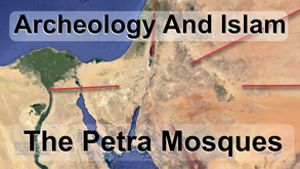
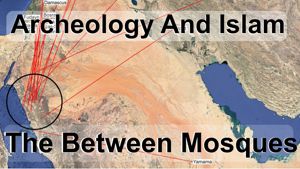

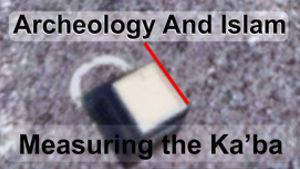
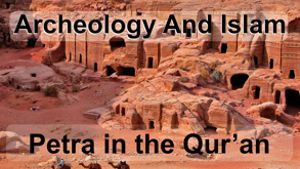
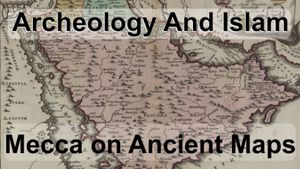
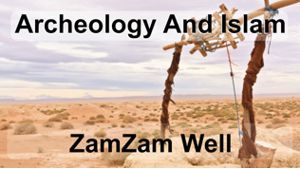
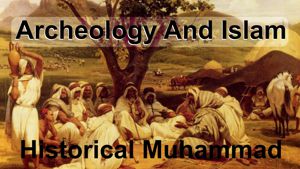
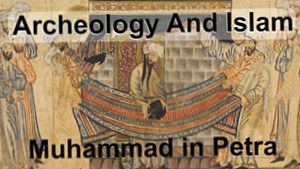
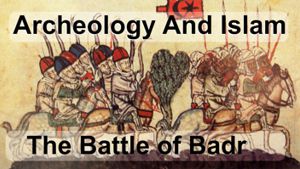
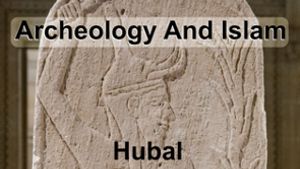
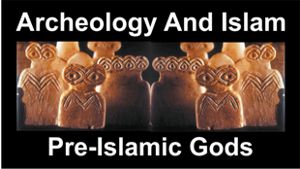
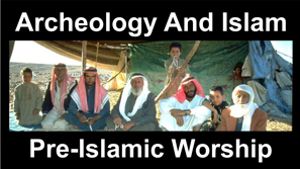
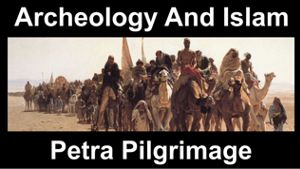


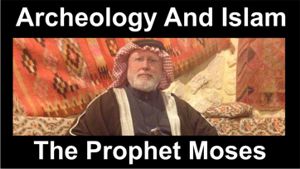
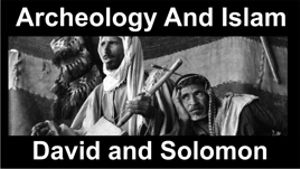

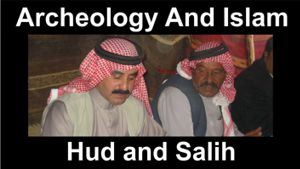


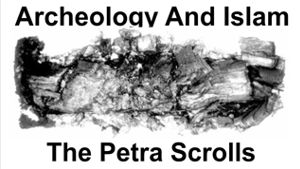
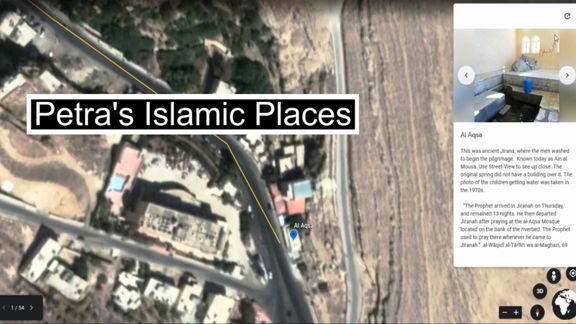

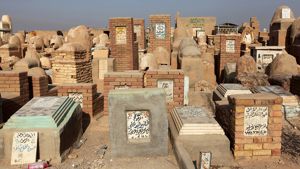
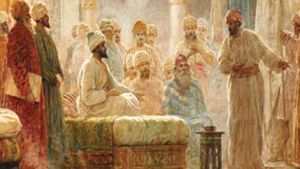
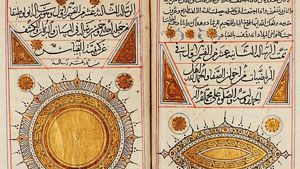
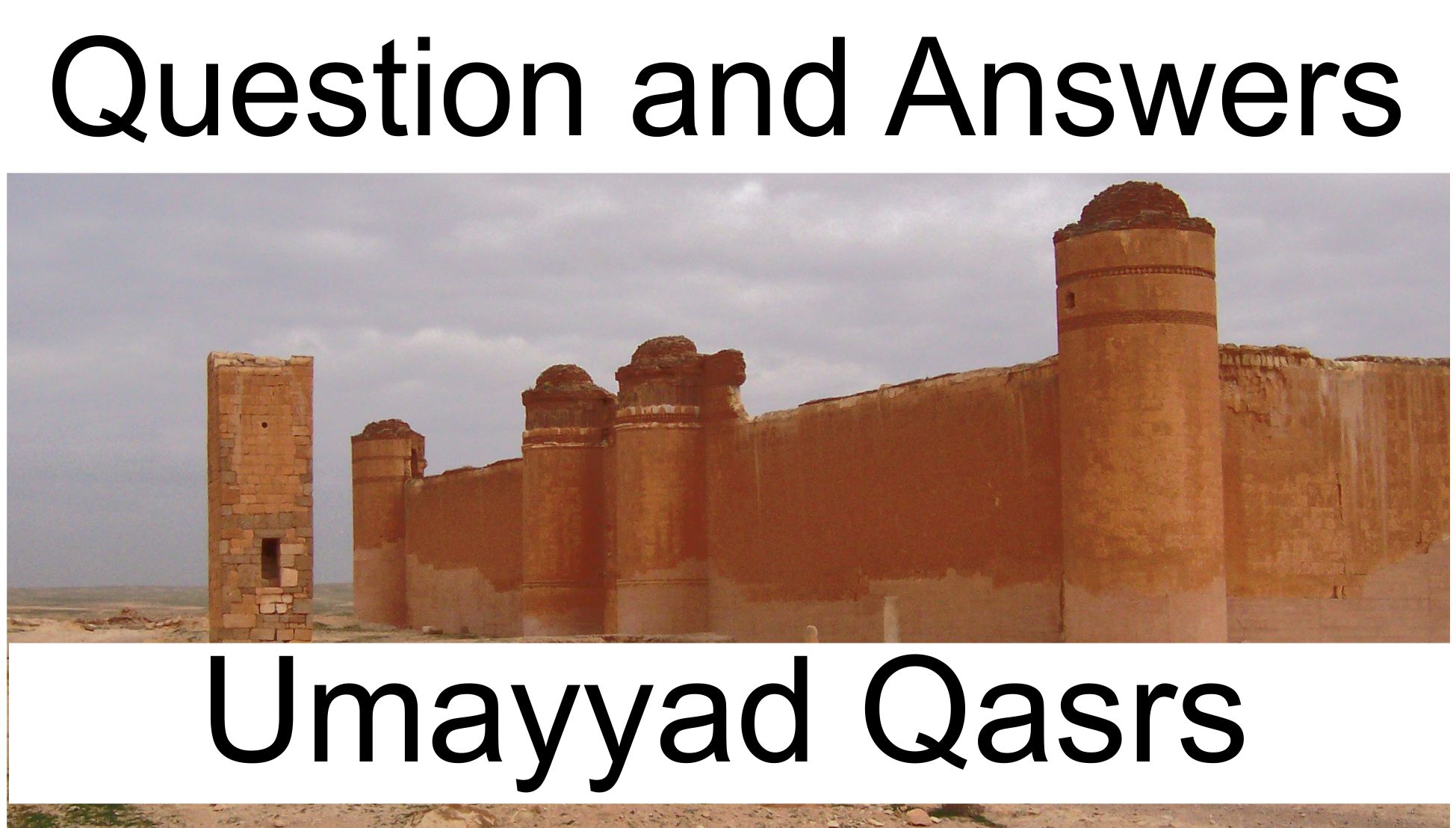
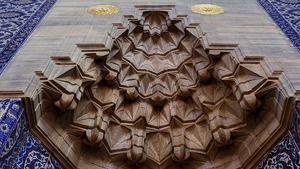
Page Discussion
Membership is required to comment. Membership is free of charge and available to everyone over the age of 16. Just click SignUp, or make a comment below. You will need a user name and a password. The system will automatically send a code to your email address. It should arrive in a few minutes. Enter the code, and you are finished.
Members who post adverts or use inappropriate language or make disrespectful comments will have their membership removed and be barred from the site. By becoming a member you agree to our Terms of Use and our Privacy, Cookies & Ad Policies. Remember that we will never, under any circumstances, sell or give your email address or private information to anyone unless required by law. Please keep your comments on topic. Thanks!